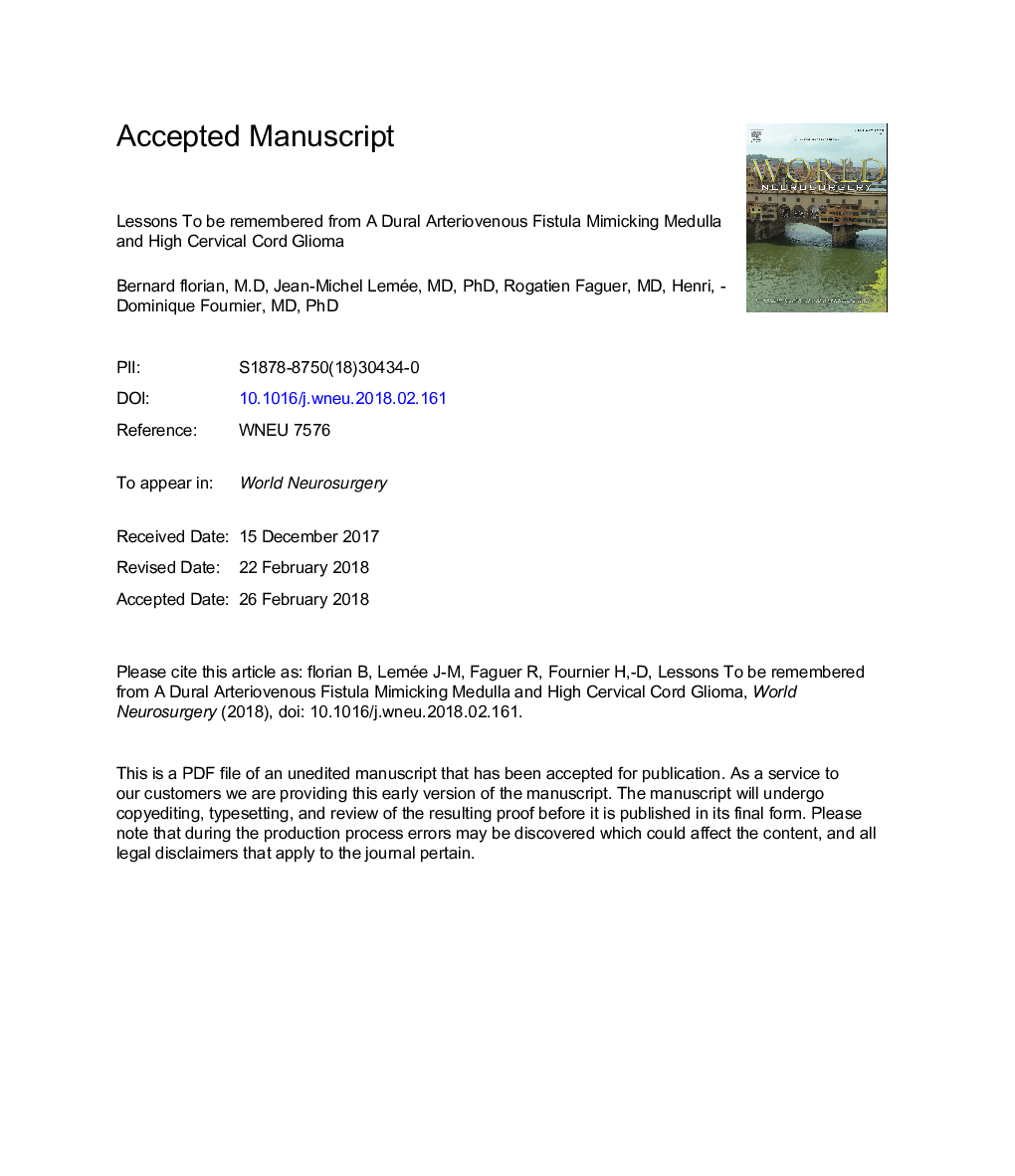| Article ID | Journal | Published Year | Pages | File Type |
|---|---|---|---|---|
| 8691711 | World Neurosurgery | 2018 | 15 Pages |
Abstract
The radiological signs of intracranial dural arteriovenous fistulas (ICDAVFs) are heterogenous. While it is commonly accepted that hyper intense T2 wedge magnetic resonance imaging of the brainstem and cervical cord mainly concern gliomas, it is so far uncommon and probably unknown that ICDAVFs can imitate similar radiological pattern, especially with gadolinium contrast enhancement and cord enlargement. Thus the angiography is poorly documented in the diagnostic workup. We report the unusual history of ICDAVFs, revealed by clinical and radiological features that mimicked a medulla or cervical spinal cord glioma. This observation provides information on the management of atypical lesions mimicking medulla or cervical cord glioma and arguments for a careful radiological study. Looking for dilated veins around the brainstem and the cord is mandatory in the workup of a supposed infiltrating brainstem or spinal cord lesion, in order to rule out an ICDAVF. Even if the hyperintense T2 images associated with contrast enhancement is in favor of a brainstem or spinal cord glioma, additional cerebral angiography should be mandatory. Moreover, this clinical case highlights the need for a multidisciplinary approach including neuroradiologist, oncologist and neurosurgeon.
Keywords
Related Topics
Life Sciences
Neuroscience
Neurology
Authors
Florian Bernard, Jean-Michel Lemée, Rogatien Faguer, Henri-Dominique Fournier,
